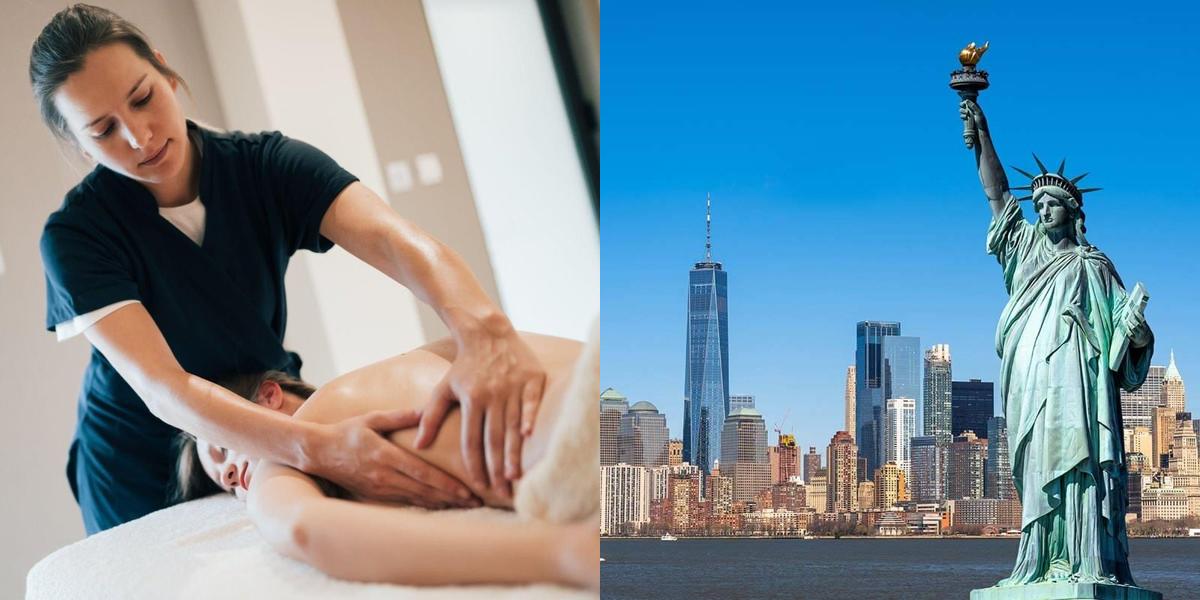How to Become a Massage Therapist in New York

Massage therapy is a growing field that offers a rewarding career helping others relax and heal. If you are interested in becoming a massage therapist in New York, there are several steps you need to take. In this article, we will explore the responsibilities of a massage therapist, where they work, the requirements to become a massage therapist in New York, and where you can find massage therapist classes in the state.
How do I get my Massage Therapist certification?
If you're interested in pursuing a career as a massage therapist, one of the first steps you'll need to take is obtaining your massage therapist certification. This certification is necessary to legally practice massage therapy in most states, including New York.
To become a certified massage therapist, you'll need to complete a massage therapy program from an accredited school. These programs typically require a high school diploma or equivalent for admission. The length of the program can vary, but it usually takes around 6 months to 2 years to complete.
During your massage therapy program, you'll learn a variety of techniques and skills that are essential for a successful career as a massage therapist. These may include Swedish massage, deep tissue massage, sports massage, and more. You'll also learn about anatomy and physiology, ethics and professionalism, and business practices.
After completing your massage therapy program, you'll need to pass a certification exam. The most widely recognized exam for massage therapists is the Massage & Bodywork Licensing Examination (MBLEx), which is administered by the Federation of State Massage Therapy Boards (FSMTB). This exam tests your knowledge and skills in various areas of massage therapy.
Once you've passed the certification exam, you'll need to apply for your massage therapist license in the state where you plan to practice. The requirements for licensure vary by state, so it's important to research the specific requirements in your state. In New York, for example, you'll need to complete an application, pay a fee, and provide proof of your education and certification.
After submitting your application, it will be reviewed by the state licensing board. If everything is in order, you'll be issued your massage therapist license, allowing you to legally practice massage therapy in your state.
How do I get a job as a Massage Therapist?
Once you've obtained your massage therapist certification and license, you'll be ready to start your career as a massage therapist. There are several steps you can take to increase your chances of finding a job in this field.
One of the first things you should do is create a professional resume and cover letter. Highlight your education, certification, and any relevant experience you may have. Be sure to include any specializations or additional training you've completed, such as prenatal massage or aromatherapy.
Next, you'll want to start searching for job opportunities. There are several ways you can do this. One option is to search online job boards, such as Indeed or Monster, for massage therapy positions in your area. You can also reach out to local spas, wellness centers, chiropractic offices, and other businesses that may employ massage therapists.
Networking is another important aspect of finding a job as a massage therapist. Attend industry events, join professional organizations, and connect with other massage therapists in your area. Building relationships with other professionals in the field can lead to job opportunities and referrals.
When applying for massage therapy positions, it's important to tailor your application to each specific job. Research the business and highlight how your skills and experience align with their needs. Consider including a portfolio of your work, such as before and after photos or testimonials from satisfied clients.
Once you've secured a job interview, be prepared to demonstrate your skills and knowledge. Brush up on your techniques and be ready to answer questions about different massage modalities and their benefits. Dress professionally and be confident in your abilities.
It's also important to continue your education and professional development as a massage therapist. This can help you stay current with industry trends and techniques, and make you a more attractive candidate for future job opportunities. Consider taking advanced training courses, attending workshops and conferences, or pursuing specialized certifications.
Career Paths and Opportunities after Becoming a Massage Therapist
Becoming a massage therapist opens up a variety of career paths and opportunities. While many massage therapists work in spas or wellness centers, there are also opportunities in other settings, such as hospitals, rehabilitation centers, and chiropractic offices.
Here are a few career paths you may consider after becoming a massage therapist:
-
Spa or Wellness Center: Many massage therapists start their careers working in spas or wellness centers. These establishments often offer a range of massage services, including Swedish massage, deep tissue massage, hot stone massage, and more. Working in a spa or wellness center can provide valuable experience and exposure to a variety of clients.
-
Chiropractic Office: Massage therapy is often used in conjunction with chiropractic care to help treat musculoskeletal conditions. Many chiropractic offices employ massage therapists to provide therapeutic massage to their patients. Working in a chiropractic office can be a rewarding career path for massage therapists interested in a more clinical setting.
-
Sports or Fitness Facility: Massage therapy is an important part of many athletes' training and recovery routines. Sports or fitness facilities may employ massage therapists to provide pre-event or post-event massage, as well as injury rehabilitation massage. This career path can be particularly rewarding for massage therapists with an interest in sports and fitness.
-
Self-Employment: Some massage therapists choose to start their own businesses and work as independent contractors. This allows them to have more control over their schedule and client base. However, self-employment also comes with additional responsibilities, such as marketing, bookkeeping, and managing business operations.
-
Teaching or Continuing Education: With experience and additional training, some massage therapists choose to pursue teaching or continuing education opportunities. They may teach massage therapy classes at a school or offer continuing education workshops for other massage therapists. This career path allows massage therapists to share their knowledge and expertise with others.
Final Thoughts
Becoming a massage therapist can be a rewarding career choice for those interested in helping others improve their physical and mental well-being. By obtaining your massage therapist certification and license, you'll be on your way to a fulfilling and in-demand career.
Remember to research the specific requirements for certification and licensure in your state, and consider joining professional organizations and attending industry events to expand your network. Tailor your resume and cover letter to each job opportunity, and be prepared to demonstrate your skills and knowledge during job interviews.
Once you've started your career as a massage therapist, there are several career paths and opportunities to explore. Whether you choose to work in a spa, chiropractic office, sports facility, or start your own business, continuing your education and professional development will be key to your success.
The field of massage therapy is constantly evolving, and staying current with industry trends and techniques will make you a more valuable and sought-after massage therapist. So, take the first step towards your massage therapist certification and start building your rewarding career in this field today.
If this article doesn't match what you're looking for, you can check out these other articles:

Athena is Co-founder and CEO of Dreambound.



